Waicare.org.nz
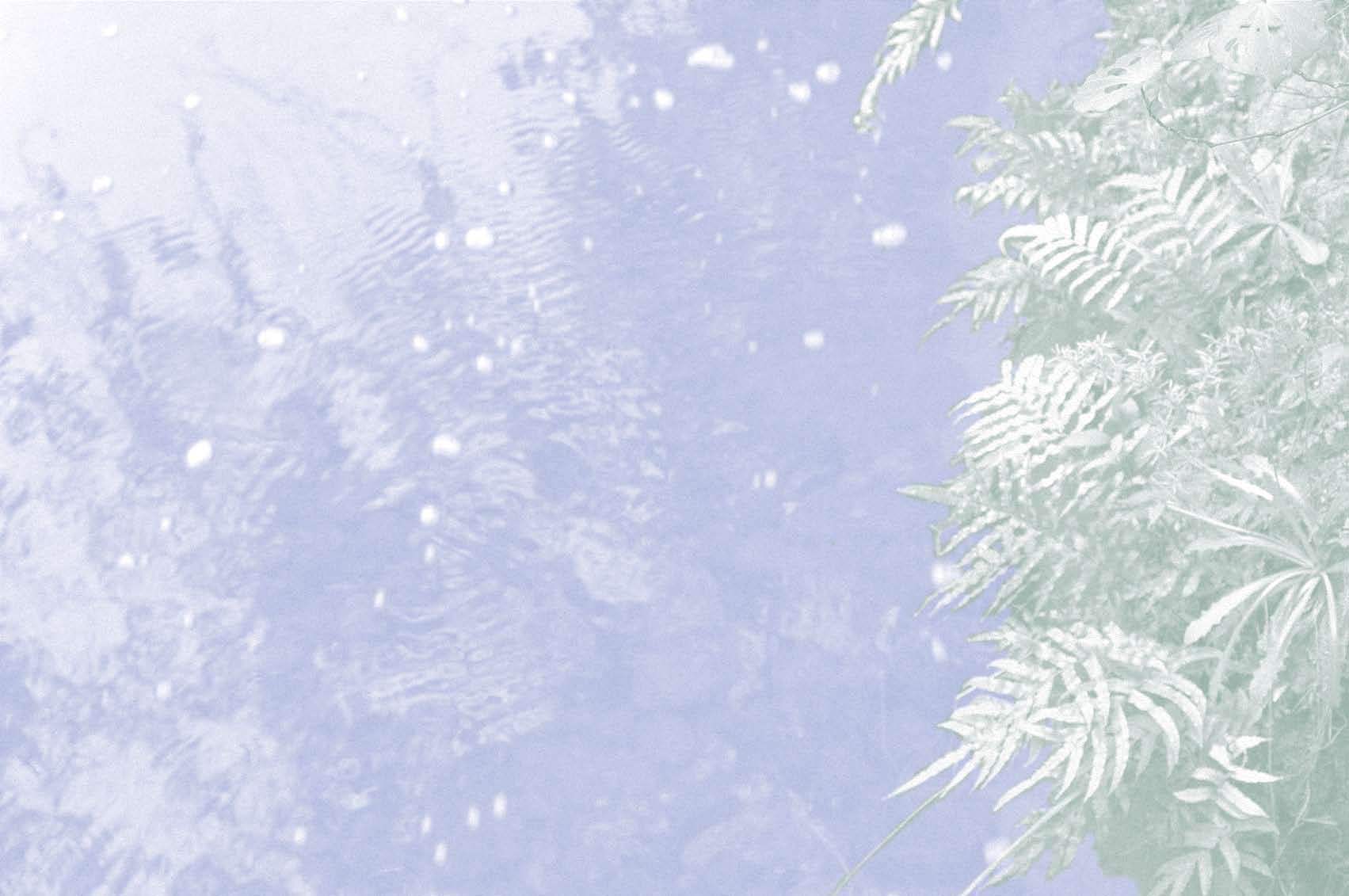

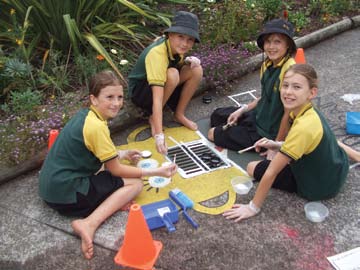
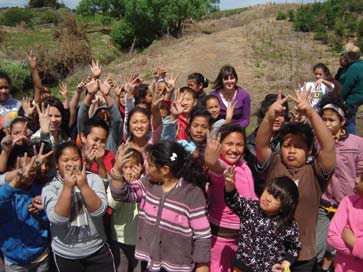
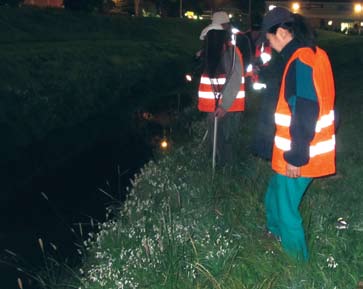
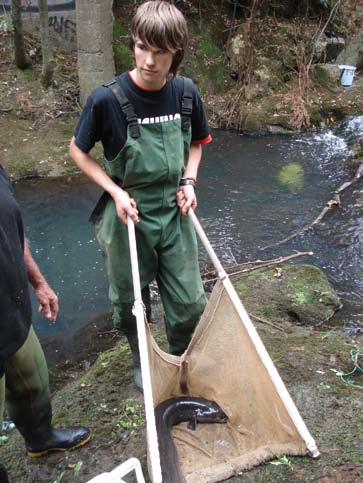
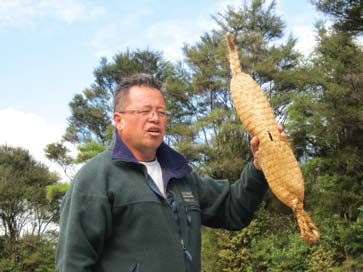

Wiri Wai Care Wonders! Students from Wiri Central School
proudly sign W after completing work on the Puhinui stream.
Learning goes beyond the classroom
Drury School drain painting
Wai Care Fieldtrip to Hunua
Brendon with a longfin eel found
during fish monitoring
Drury School's Wai Care club recently painted up a
Papakura Normal School's middle and senior
storm to give their stormwater drains a makeover.
environment club students got to explore with all
Some old designs (a mermaid, Sponge Bob Square Pants,
their senses as they touched, tasted, looked at and
and a blue seahorse) got fresh coats of paint while some new
heard the native bush, river and culture at a recent
designs were introduced. These included a huge pink jelly
fieldtrip to the Hunua Falls Regional Park.
fish with multi-coloured tentacles with the catch phrase
The students and other locals now regularly use the stream
Students were led on a short hike by Ranger Scott who taught
"don't pollute the water", and a green octopus with red legs
as a summer swimming hole. You don't get that happening in
them all about native plants, the small but precious kokako
showing the important connection between stormwater drains many city streams these days!
population and the trapping programme for invasive stoats
and the sea.
"I've never seen people so keen to pick up rubbish", says
co-ordinator Kate.
Drawing attention to these drains
At the falls, students got a closer look at the river life as
creates awareness of the
The teachers and principal were equally impressed and the
Ranger Hugh led them through a river dipping session,
important connection
exercise has provided a stimulus and more opportunities for
scooping up river bugs with nets and identifying them.
between stormwater
the great supporters within our local community.
"The students loved the roar of the falls and got very excited
streams and ocean
‘As seen on TV' solution for
when they caught shrimp and native bullies in their nets,"
says Wai Care co-ordinator, Laura Torre.
roping in whitebait
Riki Bennett captivated students as he explained the Maori
A chance viewing of a TV news story by Wai Care
traditional relationship with the forest environment. Students
co-ordinator Andrew Jenks about Environment
were spell-bound as he showed them a model reed boat
Waikato's fish survey team methods inspired a bit
made of raupo (a wetland reed), known as Mokihi that was
of kiwi ingenuity to improve the waterways for
used on rivers and lakes, sandals known as Paraerae made
Many young students crowded around to watch the artists in
whitebait in a Pakuranga Stream.
from ti kouka (cabbage tree) and harakeke (flax), and an eel
action at which point the Wai Care club, changed from artists Fish surveys in 2009 and 2010 found that a ‘hanging' culvert
trap or Hinaki made from mangemange (a climbing fern).
to stream advocates, taking the opportunity to inform
in the stream would prevent the offspring of the few banded
onlookers that the stormwater drains are not a place for
kokopu living there, returning from their nursery days in the
rubbish and that only rain should go down the drains to
estuary to the Pakuranga Stream.
prevent pollution of our streams, harbours and beaches.
Schools of inanga (whitebait) could regularly be seen below
Drury school students painting
the outlet pipe so it was clear that this large culvert posed a
stream next to their school. The stream study was part of the
significant barrier to the fish.
school's Impact Project and is supported by the Wai Care
The Environment Waikato team had developed a potential
solution for overcoming common fish barrier problems after
The Impact Project is aimed at supporting young people to
they saw whitebait climbing Pohutukawa roots growing down
be contributing and confident citizens. It is a project-based
the side of a waterfall and it was this that inspired Andrew
learning initiative driven by the passion and interests of
when he saw it on the TV news. The team imitated
students. Every Wednesday, students dedicate the entire
Pohutukawa roots using coarse rope in place of tree roots to
Riki Bennett speaks to students about traditional weaving
school day to planning, developing and carrying out their
see if climbing species could make it past a variety of barriers.
He shared the ancient Polynesian fire making process of
"With a tight budget and a difficult culvert to fix, the group
rubbing a stick on a flat board called Hika Ahi using the
Ross and Brendon got in touch with Wai Care co-ordinator
needed an innovative solution which we found on the telly",
wood of the kaikomako and mahoe trees.
Megan Beard at the start of the school year keen to explore
says Andrew.
the stream next to the brand new school. The students are
The students also got to sample a few native treats –
Wiri Wai Care wonders
both tropical fish aficionados so it was an easy leap to
Fish monitoring at the Pakuranga stream
natives – mentored by ‘fish man' Paul Woodard. Paul helped
Finally they were treated to a demonstration of two native
Usually the saying goes, curiosity killed the cat but
the students set up sampling sites and gave them traps and
flutes - the Putorino carved from native wood which made a
in this case the curiosity of a few students has led
tips to get them started.
deep haunting sound, and the Karanga Manu which makes
to the restoration of a local stream.
Over two terms the students recorded the presence of
a beautiful melodic sound used for calling birds. They also
A chance encounter with a few local kids peering over the
previously unrecorded species such as the giant bully.
heard the Nguru emitting another enchanting sound made
fence during a recent Environmental Initiatives Fund
Longfin eels ranging in size from half a metre to 1.5metres
from the tooth of a sperm whale.
community planting event near Wiri Central School and a
were other exciting finds.
"This trip really complimented what the students have been
conversation with Wai Care co-ordinators, engaged enough
The longfin eel is much rarer than its cousin, the shortfin,
learning in the Wai Care programme about water quality
interest for the school to hold their own volunteer day.
and has official designation as a nationally threatened
and the importance of native bush and restoration projects."
Fifty five students, two teachers, one parent and the principal
species. Impacts including habitat destruction and commercial
from Wiri Central School gave up their lunch break to pick
fishing have meant that numbers of longfins have dropped by
up rubbish and plant native trees and shrubs at the Puhinui
Albany Senior High students
stream restoration site (on Counties Manukau District Health
The students' obvious passion proved catching, with an
Board land) with the Wiri Wai Care group.
"Ropes have been installed up to and
invitation to present at a whole school assembly at Albany
through the culvert and we hope migrating fish will be able to
This activity is part of a six-year project which started from
A passion for tropical fish has evolved into an
Junior High School inspiring future students to think about
take advantage of it. The next stage is to repeat the survey of
vacant pasture land and is now witnessing success with an
interest in native fish – and their protection.
their environment.
juvenile fish to see whether any have made it through the
increase in insect, bird, fish and stream life. The project is
culvert. This approach is still in the very early trial stage and
Students Ross McWilliams and Brendon Finlay's interest in
Brendon has proven to be a major Wai Care asset and has
also supported by the Auckland Council's Environmental
we are working closely with Environment Waikato and
native fish was ignited by getting involved in hands-on fish
assisted with fish trapping for events and fish monitoring for
Initiative Fund and the Nestle Community Environment Project. Auckland Council to see how this works in our streams".
monitoring as part of an ecological health assessment of the
other Wai Care sites – all in his spare time!
Fascinating finds phosphate as well as slightly acidic pH.
This is why the Wai Care group at Gladstone Primary School
was surprised to find a spotty stonefly nymph just below the
Spotty stonefly at Oakley Creek waterfall in Oakley Creek on a fieldtrip in August.
The spotty stonefly scores a five in the Wai Care Invertebrate
A recent find of a spotty stonefly was a huge reward Monitoring Protocol (WIMP) indicating that they are more
for Oakley Creek Wai Care members.
tolerant to pollution than other species of stonefly. However
Spotty stonefly. Photo: S. Moore.
spotty stoneflies are still only found in medium to high quality
streams.
Stoneflies prefer cool water temperatures, stony substrate, bush
or pasture as the surrounding land use and stable stream banks.
Conservation group and Wai Care members Friends of Oakley
Creek have been working hard for a number of years to improve
the freshwater environment at Oakley, and have undertaken a
massive amount of riparian planting.
The presence of this small spotty stonefly is a huge testament to
Summer 2011
Oakley Creek in Mt Albert serves a predominantly urban
the positive ef ect these restoration ef orts are having on stabilising
‘Adventure Race' a winner
catchment and is typical of many urban streams in Auckland with stream banks, lowering contaminants from runoff entering the
often elevated water temperature and levels of nitrates and
stream and reducing water temperature by providing shade.
Auckland Council
Monitoring restoration planting
Yes it's here – as of November
1st all the local councils have
Wai Care, Wai Care, how does your planting grow?
been ‘supersized' into the
The aim of restoration planting along stream banks is to create a self-sustaining, self-maintaining habitat.
Auckland Council.
However, we all know that nature needs a helping hand now
is starting to become self-sustaining.
Wai Care is continuing to operate in
and again, so you should check in on your planting to see how
Animal action. If native seedlings are coming up but not
the new structure, but there are some
things are growing. A good way to do this is to establish a
growing any larger, look for evidence of animal pests (faeces
staffing changes.
monitoring programme, which will help you identify what
or chunks bitten out of leaves). This might suggest that pests
needs to be done with your planting area next.
like possums are eating the seedlings before they get a chance
We bid farewell to:
Some tips on how to set up a monitoring programme: to become established - it could be time to start a pest control
l The ‘Steering Group' that drew
The proof is in the picture. Take photos before you start
each individual council together and
planting (preferably before you even start weed control so you
The weeds beneath my plants. Over time you should see a
helped to guide the programme.
have a record of your site before you start caring for it).
reduction in quantities of invasive weeds as the habitat formerly
occupied by these is filled with native plants. Many invasive
North Shore City Council
Take follow up photos every six months or so. Choose a couple
weed species such as pampas grass need lots of light, so once
co-ordinator Megan Beard who
of ‘photo points' i.e. easy to identify locations or landmarks
this is removed through planting natives their ability to survive is
is moving to another exciting role
that you return to regularly to take photographs from.
reduced. Keep an eye on what invasive species are present and
in the Stormwater Education and
Seedling regeneration. Look for evidence that natural
aim to control these.
Community Programmes team.
regeneration is occurring. Native seedlings should come up
Reach out. Keep in touch with your Wai Care co-ordinator.
l Chrissy Henley the regional
without you needing to plant, indicating that your planting area
We like to hear how you are getting on!
co-ordinator who is moving to the
Auckland Regional Council and Wai Care trialled a new high
Sustainable Catchments team.
school education programme in September, which involved
We welcome Hazel Meadows who
students from high schools across Auckland and one from
joins us from the Pollution Response
Held at the Cascades, the ‘Adventure Race' was based on a Rogaine style of
Working together as the Auckland
Papakura Normal School students
planting the Old Wairoa Stream
orienteering where 12 teams of four raced against each other and the clock to
Council provides a great opportunity
get points from within a mapped area.
for Wai Care and we are excited
To win the challenge teams had to collect the greatest number of points.
about what is ahead and look forward
Bonus points could be gained by reaching furthermost points on the map and
to continuing to work with you all.
by completing ‘sustainability challenges'.
While things are being fine-tuned,
Sustainability challenges included: setting pest traps, identifying native plants,
please contact the interim Project
Interim project leader
shovelling, transporting and spreading loads of gravel to a section of track,
Leader Kim Morresey at
Kim Morresey, ph: 09 366 2000 ext 8193
Andrew Jenks, co-ordinator
identifying footprints on a trakka tunnel pad, and identifying bugs from the
ph: 0274 585 286, email: [email protected]
Waitakere Stream using the Wai Care Invertebrate Field Guide.
Julia Tuineau, co-ordinator
ph: 09 636 8020, email: [email protected]
The top two teams managed to get 180 points (9 different bugs!) out of a
Taryn Pearce, co-ordinator
ph: 09 377 9779, email: [email protected]
possible 220 points.
Justine Coup, co-ordinator
Rachel Griffiths, co-ordinator
All competitors had an amazing time, and the teachers involved said that it
ph: 09 377 9779, email: [email protected]
ph: 021 270 3621, email: [email protected]
was a fabulous event.
Central, South and East
"Due to its popularity the event will be repeated and there is potential for it
Laura Torre, co-ordinator
Shane Butland, co-ordinator
to be run at different locations and offered to younger age groups," says
ph: 09 295 2349, email: [email protected] ph: 021 252 7127, email: [email protected]
Wai Care co-ordinator Rachel Griffiths.
Source: https://waicare.org.nz/Files/NewSplash%20Summer%20FINAL.pdf
RULES AND REGULATIONS GOVERNING THE BUSINESS OF SPORTS SCUBA DIVING IN THE PHILIPPINES PURSUANT TO THE PROVISIONS OF (1) LETTER OF INSTRUCTION 745 WHICH CREATED THE PHILIPPINE COMMISSION ON THE PROMOTION AND DEVELOPMENT OF SPORTS SCUBA DIVING IN 1978, WHICH CONSEQUENTLY OUTLINED ITS PRIMARY MANDATES, WITH REFERENCE TO (2) MALACAÑAN MEMORANDUM ORDER
N e w s l e t t e r vol. 10, no. 4 - 2007 "the recent initiative of EU Commission to identify "lead markets for biobased products" has shown that there is a need for realistic surveys in the EU-markets for RRMs and RRM based products.In the last edition of Green Tech letters 3/2007 the French Agency ADEME published the results of the ALCIMED survey on existing markets and future perspectives in France.









